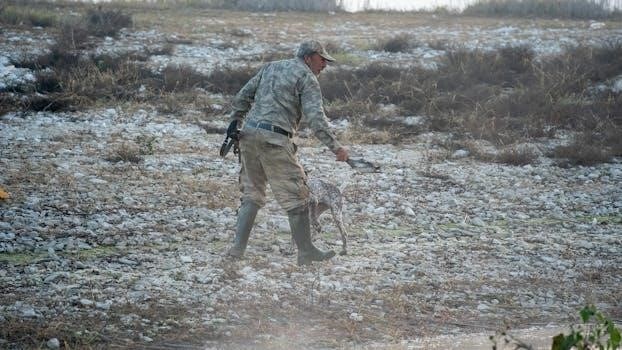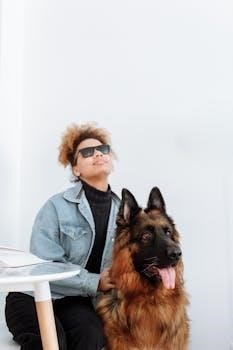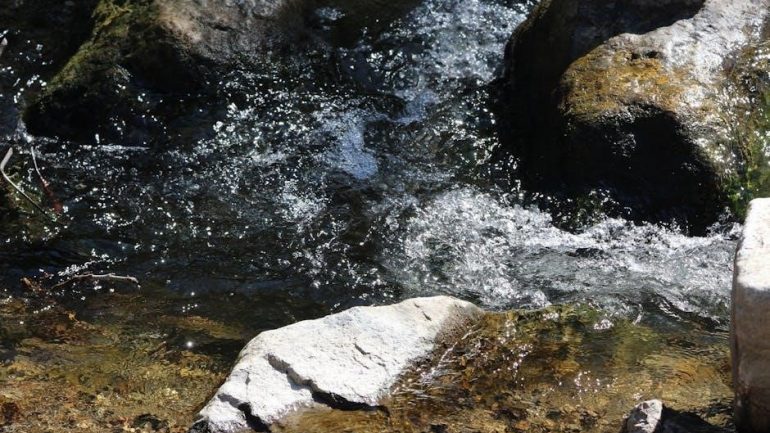Canine dissection serves as a cornerstone in veterinary education‚ providing invaluable hands-on experience. It bridges the gap between theoretical knowledge and practical application‚ enhancing understanding of anatomy. This direct engagement fosters critical skills for aspiring veterinarians.
Importance of Canine Dissection in Veterinary Education
Canine dissection plays a pivotal role in veterinary education‚ offering an irreplaceable hands-on learning experience. It allows students to directly engage with the complexities of canine anatomy‚ fostering a deeper understanding of anatomical structures and their spatial relationships. Textbooks and digital resources‚ while valuable‚ cannot fully replicate the tactile and visual learning gained through dissection. This practical experience enhances students’ ability to accurately identify anatomical landmarks‚ interpret diagnostic images‚ and perform surgical procedures with confidence. Dissection cultivates critical thinking‚ problem-solving skills‚ and meticulous attention to detail‚ essential qualities for successful veterinary practitioners. Furthermore‚ it instills a profound respect for animal life and ethical considerations in handling biological specimens‚ contributing to the development of compassionate and responsible veterinarians.

Essential Tools and Equipment
Successful canine dissection requires specific tools and equipment. A dissection kit is fundamental‚ along with personal protective equipment (PPE) for safety. Proper instruments ensure precise cuts‚ while PPE minimizes exposure to hazards.
Dissection Kit Components
A well-equipped dissection kit is essential for precise and effective canine dissection. The fundamental components typically include a scalpel with various blade sizes for making precise incisions through different tissue types. Forceps‚ both blunt and toothed‚ are needed for grasping and manipulating tissues without causing damage. Scissors‚ including both sharp and blunt-tipped varieties‚ are crucial for cutting tissues and vessels.
Probes are used for tracing structures and separating tissues. Dissecting needles are helpful for teasing apart delicate structures. A ruler assists in measuring anatomical features. Finally‚ suture materials may be included for practicing basic surgical techniques and repairing tissues after dissection. A comprehensive kit ensures accurate anatomical exploration.
Personal Protective Equipment (PPE)
Personal Protective Equipment (PPE) is paramount during canine dissection to ensure the safety and well-being of the individuals involved. Key PPE items include disposable gloves‚ which act as a barrier against potential pathogens and preservatives. Eye protection‚ such as safety glasses or goggles‚ shields the eyes from splashes and debris. A lab coat or apron protects clothing from contamination and spills.
Additionally‚ a face mask may be necessary to prevent inhalation of fumes or particles. Closed-toe shoes are essential to protect feet from dropped instruments or spills. Proper use and disposal of PPE minimize risks and maintain a safe dissection environment‚ protecting both the individual and the integrity of the process.
Preparation for Dissection
Proper preparation is crucial for a successful and safe canine dissection. This involves careful handling of the cadaver‚ adherence to safety precautions‚ and strategic positioning to facilitate optimal anatomical exploration during the procedure.
Cadaver Handling and Safety Precautions
Handling canine cadavers requires strict adherence to safety protocols. Always wear gloves and appropriate personal protective equipment (PPE) to prevent contact with preservatives like formalin‚ as well as potential zoonotic agents. Treat the cadaver with respect and dignity‚ recognizing its contribution to veterinary education.
Ensure adequate ventilation in the dissection area to minimize exposure to fumes. Properly dispose of all biological waste‚ including tissues and fluids‚ according to institutional guidelines. Wash hands thoroughly after the dissection.
Be aware of sharp instruments and use them with caution to prevent injuries. Report any cuts or punctures immediately. Consult safety data sheets for all chemicals used during the dissection. These precautions are paramount for a safe and respectful learning environment.
Positioning the Cadaver
Proper positioning of the canine cadaver is crucial for effective dissection. Begin by placing the cadaver on a dissection table‚ ensuring it’s stable and secure. The initial position often involves dorsal recumbency‚ which is lying on its back‚ for accessing ventral structures.
For limb dissections‚ lateral recumbency‚ lying on its side‚ may be preferred to expose muscles and vessels. Use positioning aids like foam blocks or towels to maintain the desired orientation and prevent unnecessary strain. Ensure adequate lighting to clearly visualize anatomical landmarks.
Secure the limbs with ties or clamps if needed‚ providing stability during the dissection process. Regularly reassess the positioning as you progress‚ adjusting as necessary to optimize access and visualization of the targeted anatomical regions. Careful positioning enhances accuracy and minimizes discomfort.

Dissection Techniques
Effective dissection hinges on mastering key techniques. Precision is paramount‚ demanding careful incisions and methodical tissue separation. Understanding the nuances of blunt versus sharp dissection is also vital for revealing anatomical structures without damage.
Skin Incisions and Removal
The initial step in any dissection involves carefully planned skin incisions. These incisions should be made with a sharp scalpel‚ following anatomical guidelines to minimize damage to underlying structures. The goal is to create flaps that can be reflected to expose the subcutaneous tissues and muscles.
Prior to making any incision‚ it’s crucial to visualize the intended path and consider the location of major blood vessels and nerves. Incisions should be clean and precise‚ avoiding jagged edges or unnecessary tearing. Once the skin is incised‚ it can be carefully separated from the underlying tissues using blunt dissection techniques.
This involves using instruments such as forceps or probes to gently tease the skin away from the underlying fascia and muscles. Take care to avoid damaging or severing any superficial blood vessels or nerves that may be present. The skin flaps should be reflected and pinned or secured to the dissection tray‚ providing a clear view of the underlying anatomy.
Blunt Dissection vs. Sharp Dissection
Dissection techniques are broadly classified into blunt and sharp methods‚ each serving distinct purposes. Blunt dissection involves separating tissues along natural planes using instruments like probes or forceps‚ minimizing damage to delicate structures. This is ideal for isolating vessels and nerves within connective tissue‚ preserving their integrity for identification.
Sharp dissection‚ conversely‚ utilizes a scalpel or scissors for precise cutting through tissues. It’s employed when separating tightly adhered structures or creating clean tissue edges for optimal visualization. The choice between blunt and sharp dissection depends on the specific anatomical region and the desired outcome.
Often‚ a combination of both techniques is necessary for effective dissection. Sharp dissection might initiate tissue separation‚ followed by blunt dissection to carefully expose underlying structures. Mastering both methods is crucial for accurate anatomical study and minimizing tissue damage during the dissection process.

Regional Dissection Guides
Effective canine dissection requires a regional approach‚ providing focused guidance for specific body areas. These guides offer step-by-step instructions‚ anatomical landmarks‚ and potential challenges. This ensures thorough exploration and understanding of each region’s unique features.
Thoracic Limb Dissection
Thoracic limb dissection is a fundamental component of canine anatomy studies‚ focusing on the intricate muscular and skeletal structures. Begin by carefully removing the skin‚ exposing the underlying muscles‚ such as the brachiocephalicus and trapezius. Identify and separate extrinsic muscles connecting the limb to the trunk‚ paying close attention to their origins and insertions.
Proceed to dissect the intrinsic muscles of the scapula‚ brachium‚ antebrachium‚ and manus‚ noting their specific functions in limb movement. Careful blunt dissection helps to reveal the neurovascular structures‚ including the brachial artery and its branches‚ as well as the major nerves innervating the limb. Detailed observation and precise technique are crucial for a comprehensive understanding of the thoracic limb’s complex anatomy.
Abdominal Dissection
Abdominal dissection in canine anatomy involves a systematic exploration of the digestive‚ urinary‚ and reproductive systems. Begin with a midline incision‚ carefully opening the abdominal cavity to expose the viscera. Identify the stomach‚ small and large intestines‚ liver‚ spleen‚ and pancreas‚ noting their relative positions and relationships.
Trace the course of the bile duct as it empties into the duodenum‚ alongside the pancreatic duct at the major duodenal papilla. Dissect the kidneys and ureters‚ following their path to the urinary bladder. In female specimens‚ identify the ovaries‚ uterine horns‚ and uterus; in males‚ locate the testes and associated structures. Blunt dissection is useful for separating delicate tissues and revealing underlying anatomical details.
Head and Neck Dissection
Dissection of the canine head and neck requires meticulous technique to reveal intricate structures. Begin by carefully removing the skin‚ exposing the underlying muscles and vasculature. Identify the major salivary glands‚ including the parotid and mandibular glands. Using blunt dissection‚ separate and identify the common carotid artery and vagosympathetic nerve trunk within the carotid sheath.
Trace the branches of the facial nerve as they innervate the muscles of facial expression. Dissect the oral cavity and pharynx‚ noting the tongue‚ teeth‚ and palatine tonsils. Expose the larynx and trachea‚ carefully identifying the associated cartilages and muscles. This region houses many vital structures.

Identification of Anatomical Structures
Successful canine dissection hinges on accurately identifying anatomical structures. This involves careful observation‚ precise dissection techniques‚ and a thorough understanding of canine anatomy. Mastery of this skill is essential for veterinary professionals.
Muscular System
The muscular system in canines is a complex network responsible for movement‚ posture‚ and various bodily functions. During dissection‚ meticulous attention should be given to identifying individual muscles‚ noting their origin‚ insertion‚ and action. Understanding muscle groups‚ such as those in the thoracic and pelvic limbs‚ is crucial.
Careful separation and identification of muscles like the biceps brachii‚ triceps brachii‚ gluteal muscles‚ and quadriceps femoris are essential. Pay close attention to the arrangement of muscle fibers and their relationship to tendons and ligaments. Recognizing the different layers of muscles‚ from superficial to deep‚ is also important for a comprehensive understanding. Additionally‚ observe the innervation of each muscle‚ tracing the nerves that supply them.
Vascular System
The canine vascular system‚ comprising arteries‚ veins‚ and capillaries‚ is vital for transporting blood‚ oxygen‚ and nutrients throughout the body. Dissection involves carefully tracing major blood vessels‚ such as the aorta‚ vena cava‚ and their branches. Distinguishing between arteries‚ which carry oxygenated blood away from the heart‚ and veins‚ which return deoxygenated blood‚ is fundamental.
Attention should be given to identifying specific vessels like the carotid artery‚ jugular vein‚ femoral artery‚ and saphenous vein. Understanding the branching patterns and the organs or tissues supplied by each vessel is crucial. Careful dissection is necessary to avoid damaging delicate vessels and to accurately map their course. Additionally‚ note any variations in vascular anatomy.
Nervous System
Dissection of the canine nervous system requires meticulous technique to reveal its delicate structures. Begin by identifying the major components⁚ the brain‚ spinal cord‚ and peripheral nerves. Expose the brain by carefully removing the skull bones‚ noting the meninges protecting it. Trace the spinal cord through the vertebral canal‚ observing the spinal nerves exiting at each vertebral level.
Peripheral nerves‚ such as the sciatic and radial nerves‚ should be followed to their target muscles or sensory receptors. Distinguish between sensory and motor nerves based on their origin and destination. Microscopic examination of nerve tissue can further enhance understanding of its cellular composition and function. This detailed dissection provides insight into neural pathways.


